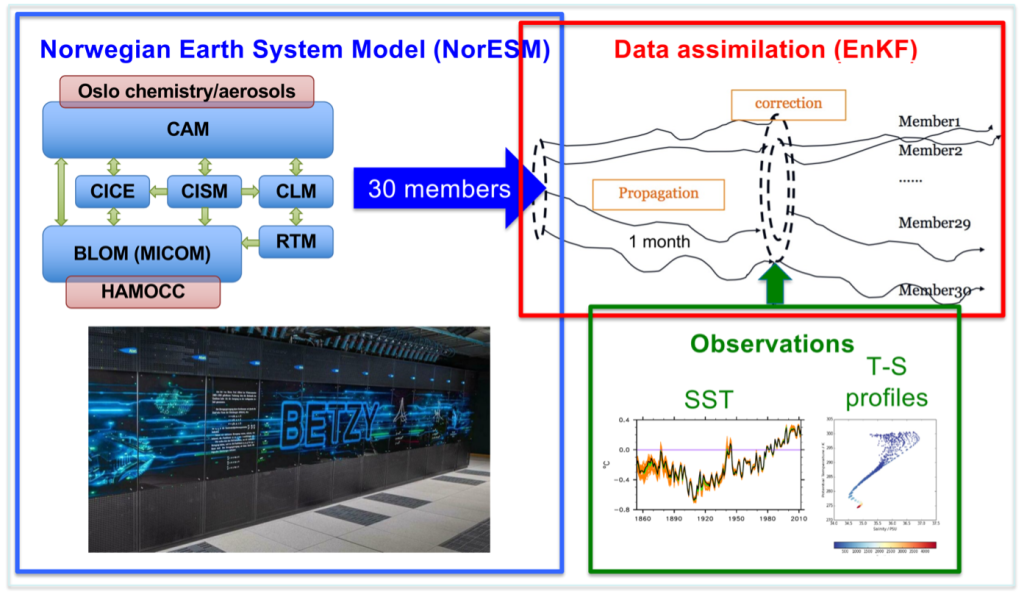Ingo Bethke, a climate scientist in Climate Futures, together with his co-authors recently published a paper evaluating the climate forecasts from the Norwegian Climate Prediction Model (NorCPM1). By taking into consideration historical ocean observations as starting condition for decadal forecasts, the model’s ability to retrospectively forecast temperature over land a few years into the future improves.

The Norwegian Climate Prediction Model (NorCPM) is a new tool for performing seasonal-to-decadal climate forecasts (Figure 1). It adds data assimilation capability to the Norwegian Earth System Model (NorESM), which adjusts the model simulations such that the internal variations in the model climate system are synchronized with the observations in a physically consistent way. Figure 2 below, shows that data assimilation makes the model reproduce the observed global temperature much better than model simulations without assimilation. These model simulations provide improved starting conditions for the decadal forecasts compared to starting the forecasts from model simulations without data assimilation.

In a new publication with the title “NorCPM1 and its contribution to CMIP6 DCPP” published in Geoscientific Model Development, the team of scientists at the Bjerknes Climate Prediction Unit at the Bjerknes Centre for Climate Research describes the NorCPM system and evaluate its performance. These simulations are also a part of the Decadal Climate Prediction Project (CMIP6 DCPP), a key source of information for the Intergovernmental Panel on Climate Change Sixth Assessment Report (IPCC AR6).
The team ran more than 1000 numerical simulations on national supercomputers of retrospective forecasts of past climate variations to gain new insights into climate predictability. Their study particularly focused on how using data assimilation to determine the starting conditions can affect the model’s prediction skill on an interannual-to-decadal time scale.
They found that by assimilating the ocean observations into the ocean model component, they improve the climate prediction over land for the coming years (Figure 3). If, in addition, the ocean observations are assimilated into the sea ice component, then the predictions are improved even further. In general, better starting conditions made the model better at predicting 1 year ahead (first panel), but it has also improved skill on the 2–5-year time scale and 6-9 years over Europe and North America and in the North Atlantic and Nordic Seas (orange and red areas in Figure 3).

Why is this relevant for Climate Futures?
– Our ambition in Climate Futures is to transform NorCPM from a research tool into an operational forecast system that provides real-time climate predictions with high enough skill to be societally useful, particularly in our socioeconomic region, Bethke says.
– To this end, we prepare NorCPM forecasts in a timely manner and cater them—along with forecasts of other systems—to Climate Futures activities that work on applications. In turn, these activities on applications guide further development of NorCPM by communicating back skill requirements, climate parameters of particular interest as well as the added value from including NorCPM forecasts. Upgrades of the Earth system component (such as physical and dynamical representations and spatial resolution), the use of atmospheric and land observations in forecast initialization and other updates to the prediction system are well underway. How these efforts improve NorCPM’s prediction will be demonstrated in upcoming publications.
